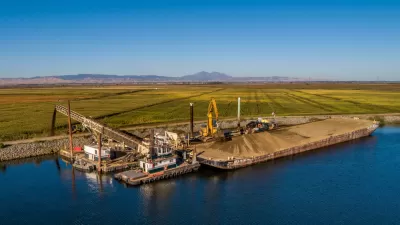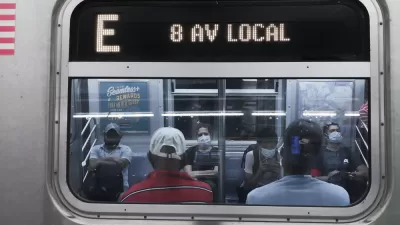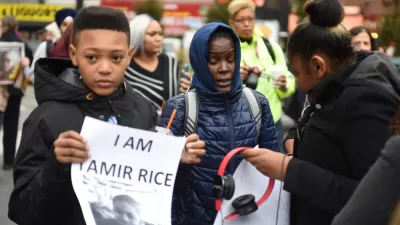Being a person of color in the United States means being physically vulnerable to both environmental hazards and police violence, two professors argue.
UC Davis professors are exploring the connections between police killings of black Americans and toxic environmental conditions. In a forthcoming article, they argue that "place and environment matters when discussing police violence," reports Brentin Mock in CityLab.
Environmental hazards are overly concentrated in communities of color, where police violence has also been persistently protested.
The authors propose understanding U.S. racism as "an embodied experience of structural, environmental insecurity." Professor Lindsey Dillon adds:
"Toxic exposure is also a form of slow violence and slow death… For many people, the lived experience of police violence and toxic exposure—these different forms of physical vulnerability both live together. We have to think of them together instead of thinking of them separately."
Mock offers context in anticipation of the article, touching on the police killings of Freddie Gray in Baltimore (where he, like Korryn Gaines, struggled with lead poisoning) and Eric Garner in New York (who suffered from asthma, a condition whose distribution is racialized across New York and the U.S.), among others.
FULL STORY: How Environmental Injustice Connects to Police Violence

Alabama: Trump Terminates Settlements for Black Communities Harmed By Raw Sewage
Trump deemed the landmark civil rights agreement “illegal DEI and environmental justice policy.”

Planetizen Federal Action Tracker
A weekly monitor of how Trump’s orders and actions are impacting planners and planning in America.

Why Should We Subsidize Public Transportation?
Many public transit agencies face financial stress due to rising costs, declining fare revenue, and declining subsidies. Transit advocates must provide a strong business case for increasing public transit funding.

Judge Orders Release of Frozen IRA, IIJA Funding
The decision is a victory for environmental groups who charged that freezing funds for critical infrastructure and disaster response programs caused “real and irreparable harm” to communities.

‘Clybourne Park’ Sets Stage for Housing Equity Discussions
Clybourne Park, a play exploring race, real estate, and community tensions, can set the stage for discussion on the lasting impacts of housing discrimination, gentrification, and the fight for affordability.

Understanding Road Diets
An explainer from Momentum highlights the advantages of reducing vehicle lanes in favor of more bike, transit, and pedestrian infrastructure.
Urban Design for Planners 1: Software Tools
This six-course series explores essential urban design concepts using open source software and equips planners with the tools they need to participate fully in the urban design process.
Planning for Universal Design
Learn the tools for implementing Universal Design in planning regulations.
Caltrans
Smith Gee Studio
Institute for Housing and Urban Development Studies (IHS)
City of Grandview
Harvard GSD Executive Education
Toledo-Lucas County Plan Commissions
Salt Lake City
NYU Wagner Graduate School of Public Service





























